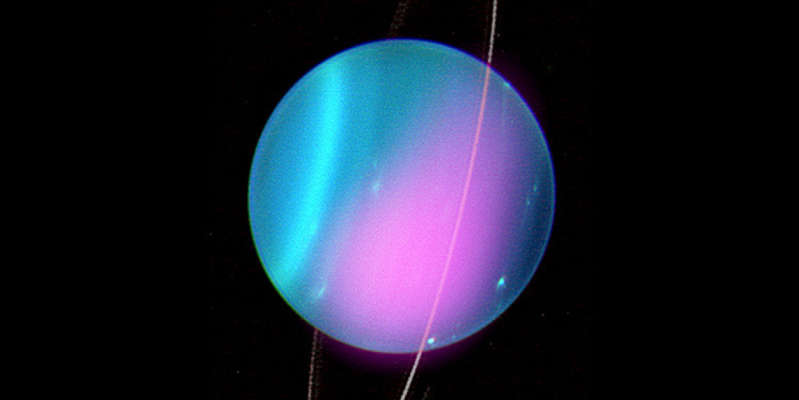
Uranus recorded X-rays for the first time
Astronomers using NASA's Chandra Observatory have recorded X-rays from the planet Uranus for the first time. This study will help uncover new features of the ice giant, Science News reported.
It is known that Uranus is the seventh planet from the Sun. Its diameter is six times that of the earth. There are two belts of rings around its equator. Uranus, unlike other planets, rotates on its side – presumably, it changed position after a cosmic impact.
Voyager 2 remains the only ship that has flown past Uranus. Therefore, scientists rely more on terrestrial telescopes during research.
As part of a new scientific work, they analyzed the data of “Chandra” for 2002 and 2017. They saw a clear flare of X-rays in 2002 and a possible flare 15 years later.
Scientists linked this phenomenon to the Sun: the atmosphere of Uranus scattered X-rays coming from the star, as the Earth's atmosphere scatters sunlight. But there is a possibility that the planet has its own source of radiation.
According to one theory, the rays can be associated with the rings of Uranus, which interact with charged particles (electrons and protons). Another possibility is that at least some of the X-rays come from the auroras on Uranus.
“Uranus is a particularly interesting target for X-ray observations because of the unusual orientation of its axis of rotation and magnetic field,” – noted the authors of the scientific work.
Studies have shown that the axes of rotation and magnetic field of other planets in the solar system are almost perpendicular to the plane of their orbit, but the axis of rotation of Uranus is almost parallel to its trajectory around the sun. In addition, Uranus itself “lies” on its side, and its magnetic field is tilted to the other side and offset from the center of the planet. As a result, its auroras can be very complex and volatile.
The scientists noted that studying X-ray sources on Uranus will help to better understand the nature of other space objects that also emit X-rays, such as black holes and neutron stars.
Earlier it was reported that the moons of Uranus may be habitable. Inland oceans may be hidden under their surface.

